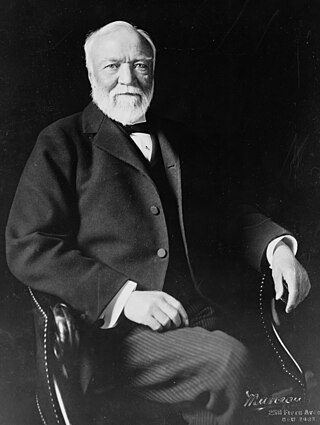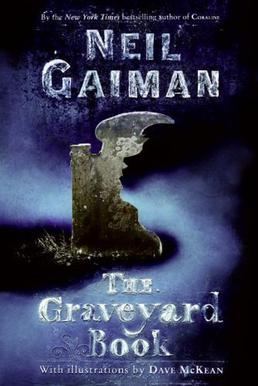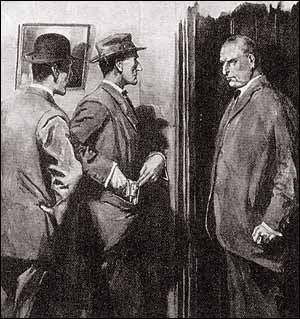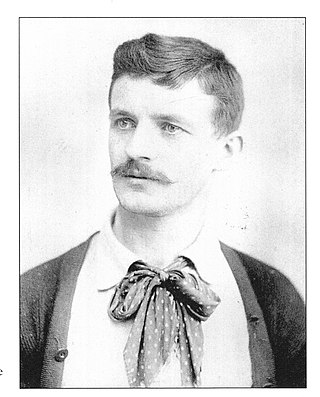
Andrew Carnegie was a Scottish-American industrialist and philanthropist. Carnegie led the expansion of the American steel industry in the late 19th century and became one of the richest Americans in history. He became a leading philanthropist in the United States, Great Britain, and the British Empire. During the last 18 years of his life, he gave away around $350 million, almost 90 percent of his fortune, to charities, foundations and universities. His 1889 article proclaiming "The Gospel of Wealth" called on the rich to use their wealth to improve society, expressed support for progressive taxation and an estate tax, and stimulated a wave of philanthropy.

William Sydney Porter, better known by his pen name O. Henry, was an American writer known primarily for his short stories, though he also wrote poetry and non-fiction. His works include "The Gift of the Magi", "The Duplicity of Hargraves", and "The Ransom of Red Chief", as well as the novel Cabbages and Kings. Porter's stories are known for their naturalist observations, witty narration, and surprise endings.

The Homestead strike, also known as the Homestead steel strike, Homestead massacre, or Battle of Homestead, was an industrial lockout and strike that began on July 1, 1892, culminating in a battle in which strikers defeated private security agents on July 6, 1892. The governor responded by sending in the National Guard to protect strikebreakers. The dispute occurred at the Homestead Steel Works in the Pittsburgh-area town of Homestead, Pennsylvania, between the Amalgamated Association of Iron and Steel Workers and the Carnegie Steel Company. The final result was a major defeat for the union strikers and a setback for their efforts to unionize steelworkers. The battle was a pivotal event in U.S. labor history.

Henry Clay Frick was an American industrialist, financier, and art patron. He founded the H. C. Frick & Company coke manufacturing company, was chairman of the Carnegie Steel Company, and played a major role in the formation of the giant U.S. Steel manufacturing concern. He also financed the construction of the Pennsylvania Railroad and the Reading Company, and had extensive real estate holdings in Pittsburgh and throughout the state of Pennsylvania. He later built the historic neoclassical Frick Mansion, and upon his death donated his extensive collection of old master paintings and fine furniture to create the celebrated Frick Collection and art museum. However, as a founding member of the South Fork Fishing and Hunting Club, he was also in large part responsible for the alterations to the South Fork Dam that caused its failure, leading to the catastrophic Johnstown Flood. His vehement opposition to unions also caused violent conflict, most notably in the Homestead Strike.

Carl William Demarest was an American character actor, known especially for his roles in screwball comedies by Preston Sturges and for playing Uncle Charley in the sitcom My Three Sons Demarest, who frequently played crusty but good-hearted roles, was a prolific film and television actor, appearing in over 140 films, beginning in 1926 and ending in the late 1970s. Before his career in motion pictures, he performed in vaudeville for two decades.

Henry Ossawa Tanner was an American artist and the first African-American painter to gain international acclaim. Tanner moved to Paris, France, in 1891 to study at the Académie Julian and gained acclaim in French artistic circles. His painting Daniel in the Lions' Den was accepted into the 1896 Salon, the official art exhibition of the Académie des Beaux-Arts in Paris. Tanner's Resurrection of Lazarus was purchased by the French government after winning the third-place medal at the 1897 Salon. In 1923, the French government elected Tanner chevalier of the Legion of Honor.

The Frick Building is one of the major distinctive and recognizable features of Downtown Pittsburgh, Pennsylvania, United States. The tower was built by and is named for Henry Clay Frick, an industrialist coke producer who created a portfolio of commercial buildings in Pittsburgh. The building is listed on the National Register of Historic Places.

Greater Pittsburgh is a populous region centered around Pittsburgh, Pennsylvania, the region's largest city and economic hub. The region encompasses Pittsburgh's urban core county, Allegheny, and six adjacent Pennsylvania counties: Armstrong, Beaver, Butler, Fayette, Washington, and Westmoreland in Western Pennsylvania, which constitutes the Pittsburgh, PA Metropolitan Statistical Area MSA as defined by the U.S. Census Bureau.
John Kane was an American painter celebrated for his skill in Naïve art.

A Pelican at Blandings is a novel by P. G. Wodehouse, first published in the United Kingdom on 25 September 1969 by Barrie & Jenkins, London, and in the United States on 11 February 1970 by Simon & Schuster, Inc., New York, under the title No Nudes Is Good Nudes.

Andrey Avinoff ; was an internationally-known artist, lepidopterist, museum director, professor, bibliophile and iconographer, who served as the director of the Carnegie Museum of Natural History in Pittsburgh from 1926 to 1945.

Diamond Jim is a 1935 biographical film based on the published biography Diamond Jim Brady by Parker Morell. It follows the life of legendary entrepreneur James Buchanan Brady, including his romance with entertainer Lillian Russell, and stars Edward Arnold, Jean Arthur, Cesar Romero and Binnie Barnes.

The Graveyard Book is a young adult novel by the English author Neil Gaiman, simultaneously published in Britain and America in 2008. The Graveyard Book traces the story of the boy Nobody "Bod" Owens who is adopted and reared by the supernatural occupants of a graveyard after his family is brutally murdered.

Helen Clay Frick was an American philanthropist and art collector. She was born in Pittsburgh, Pennsylvania, the third child of the coke and steel magnate Henry Clay Frick (1849–1919) and his wife, Adelaide Howard Childs (1859–1931). Two of her siblings did not reach adulthood, and her father played favorites with his two surviving children, Childs Frick (1883–1965) and Helen. After the reading of their father's will, which favored Helen, the brother and sister were estranged for the rest of their lives. Nonetheless, Helen developed as a strong, independent and spirited young woman.

John George Alexander Leishman was an American businessman and diplomat. He worked in various executive positions at Carnegie Steel Company and later served as an ambassador for the United States.

Henry Demarest Lloyd was a 19th-century American progressive political activist and pioneer muckraking journalist. He is best remembered for his exposés of the Standard Oil Company, which were written before Ida M. Tarbell's series for McClure's Magazine.
Roger Alan Murrah is a songwriter and independent music publisher who has written hits for artists including Waylon Jennings, Alan Jackson, Al Jarreau, and Alabama.

"The Disappearance of Lady Frances Carfax" is one of the 56 Sherlock Holmes short stories written by Sir Arthur Conan Doyle. It is one of the eight stories in the cycle collected as His Last Bow (1917), and one of the few stories in which for much of the plot Watson must act alone and try his best with Holmes left in the background. It was first published in The Strand Magazine in the United Kingdom and The American Magazine in the United States in December 1911.
Sincerely Yours is a 1955 Warner Color film romantic music comedy starring Liberace.

August Zeller was an American sculptor and teacher.















